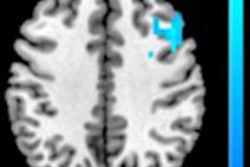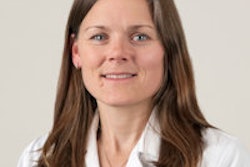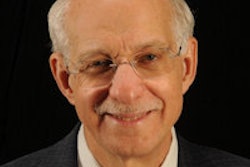Swimming in a sea of paperwork, the demands on radiology residency program administrators are rising steadily, and may be reaching levels that make some wary of staying on the job, according to survey results published online in the Journal of the American College of Radiology.
Most program administrators believe their jobs are harder than they were five years ago, and most are sure that they are completing more paperwork, the results showed.
Program administrators were quick to link the source of their dissatisfaction to time spent on metrics, outcomes, and documentation rather than teaching and taking care of patients, to the detriment of all, the survey showed, wrote Dr. Grant Webber and colleagues from Emory University in Atlanta.
"Some feel that these increased demands may in part have negative effects on resident education and patient care," they wrote (JACR, April 1, 2013).
Growing responsibilities
Program administrators have seen their list of responsibilities grow in recent years, resulting in increased paperwork and documentation that presumably affect not only program directors, but also administrators, faculty members, graduate medical education offices, and the residents themselves, Webber told AuntMinnie.com in an interview.
"The impetus for the study was that we were getting bogged down with a tremendous amount of administrative work, paperwork, and forms to fill out," said Webber, a fourth-year resident at Emory. "We felt that to some degree it was taking away from the learning and the research, and we wanted to see if others were noticing this as well. And we thought if we could show that it wasn't just us, that other programs were experiencing the same problems, that we could use the numbers ... to try to make some changes."
There is evidence that administrative work has been burdensome for a while. A 2004 study showing a turnover rate approaching 20% for program directors highlighted the difficulties associated with the program director position, concerns that seem to be as valid as ever in an environment where the workload is increasing continually and burnout is a real possibility. The number of residents per program has increased as well.
Nearly three-fourths of institutions have tried to address the burden by adding at least one additional leadership position, such as assistant program director, associate program director, or program director emeritus, the group wrote.
The many time-consuming documentation tasks include the program information form (PIF), which must be completed in preparation for a site visit and comes in different forms depending on the specialty or subspecialty, the authors noted. That particular form will be disappearing as part of the Next Accreditation System (NAS) by the Accreditation Council for Graduate Medical Education (ACGME) to be implemented beginning in July, Webber said.
In addition, as part of the restructuring of radiology education, the ACGME is emphasizing the six domains of competency reflected in the NAS. Data collection will involve resident milestones and also resident and faculty surveys, as well as procedural case logs, Weber and colleagues wrote.
Programs "that demonstrate desirable outcomes will have increased opportunities for innovation, with less detailed standardization of requirements," they wrote. Changes in the accreditation cycle are likely to have an impact on the demands of directors and other program leaders, but whether the impact is positive or negative isn't yet known.
"I don't think anybody really knows yet, we're hoping this data can be beneficial," he said. "The ACGME website talks about [the NAS] and gives a brief description of what it's going to be like without giving specifics. So it's a little early to tell what it's going to be, but I think the motives are in the right place, with the goal of streamlining things and ultimately decreasing the paperwork."
Asking about change
The eight-question survey published in JACR asked how program directors felt their jobs had changed in the past few years, and whether and how the changes might affect resident learning and patient care. Additional questions left room for free responses. The results were as follows:
Most programs (36/60) had fewer than 25 residents, while 15% had 26 to 35 residents, 15% had 36 to 45 residents, and 8% had 46 to 55 residents.
The mean length of time current program directors had been on the job was 6.9 years, while the previous program director had a mean of 8.7 years on the job. The change did not reach statistical significance (p = 0.59).
Preparing a PIF for the most recent site visit took an average of 146 hours (average 135 pages), compared with 99.7 hours (average 105 pages) two years earlier, and 55.4 hours (average 55 pages) 10 years ago (p = 0.0205), the study team reported.
Meanwhile, the average number of pages in the PIF averaged 135 currently, 105 two years ago, and 55 during the next earlier cycle.
Fully 80% (48/60) respondents said they believed that the program director job is harder than it was five years ago.
A majority of respondents strongly agreed that time spent on metrics (58%, 42/60), outcomes (61%), and documentation (70%) is taking away time needed for teaching, learning, and caring for patients. Two-thirds of residents favored standard curricula used by all programs.
The results showed less willingness to stay with the job for many years, and the causes are likely multifactorial, although "one can speculate that increasing administrative responsibilities, increasing residency sizes, and perhaps decreasing opportunities for teaching and patient care are leading to earlier burnout," and the turnover itself can make things more difficult for those who remain, the group wrote.
"The overwhelming consensus was that other groups felt that they were feeling the burdens as we were," Webber said.
A recent paper emphasized that program excellence should be more important than conformity with regard to accreditation, the authors noted. But for now, administrative tasks rule the day.
"Some feel that these increased demands may, in part, have negative effects on resident education and patient care," the group wrote.
"The programs are getting bigger, the requirements are getting more burdensome, so they need more people to help," Webber said.



















